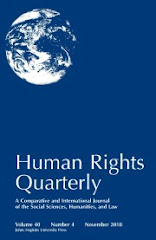The Article II treaty process has been dying a slow death for decades, replaced by various forms of “executive agreements.” What is only beginning to be appreciated is the extent to which both treaties and executive agreements are increasingly being overshadowed by another form of international cooperation: nonbinding international agreements. Not only have nonbinding agreements become more prevalent, but many of the most consequential (and often controversial) U.S. international agreements in recent years have been concluded in whole or in significant part as nonbinding international agreements. Despite their prevalence and importance, nonbinding international agreements are not currently subject to any of the domestic statutory or regulatory requirements that apply to binding agreements. As a result, they are not centrally monitored or collected within the executive branch, and they are not systematically reported to Congress or disclosed to the public.
This Article focuses on three of the most important types of nonbinding international agreements concluded by the United States: (1) high-level formal agreements; (2) joint statements and communiques; and (3) nonbinding agreements concluded by administrative agencies. After describing these categories and their history, the Article presents the first empirical study of U.S. nonbinding agreements, drawing on two new databases that together include more than 2100 nonbinding agreements. Based on this study, the Article argues that many of the concerns that prompted Congress to regulate binding executive agreements starting in the 1970s also apply to nonbinding agreements. Finally, drawing in part on insights obtained from a comparative assessment of the practices and reform discussions taking place in other countries, the Article suggests legal changes designed to enhance coordination and accountability.
Sunday, February 13, 2022
Bradley, Goldsmith, & Hathaway: The Rise of Nonbinding International Agreements: An Empirical, Comparative, and Normative Analysis
Curtis Bradley (Univ. of Chicago - Law), Jack Landman Goldsmith (Harvard Univ. - Law), & Oona A. Hathaway (Yale Univ. - Law) have posted The Rise of Nonbinding International Agreements: An Empirical, Comparative, and Normative Analysis. Here's the abstract:





